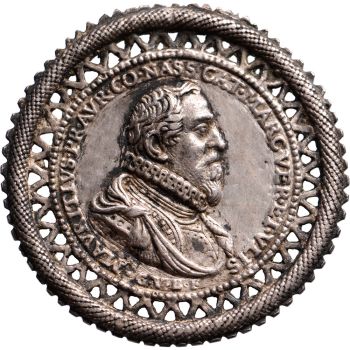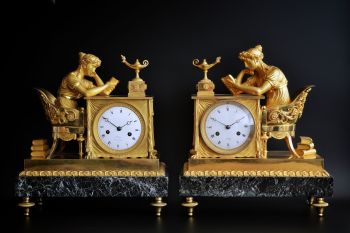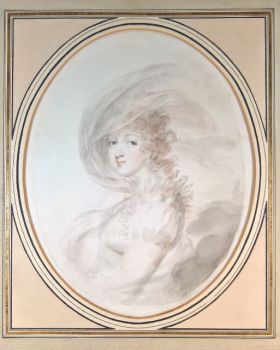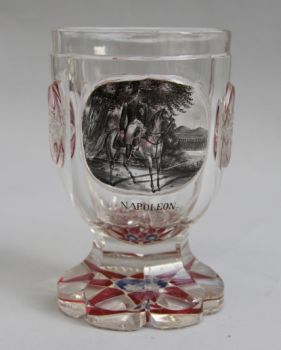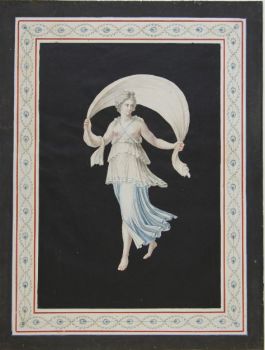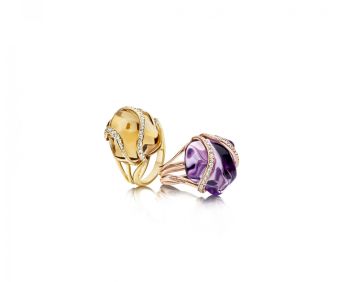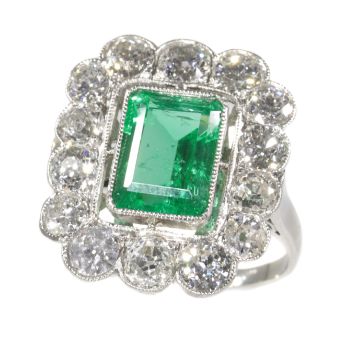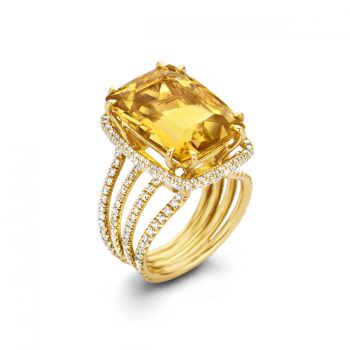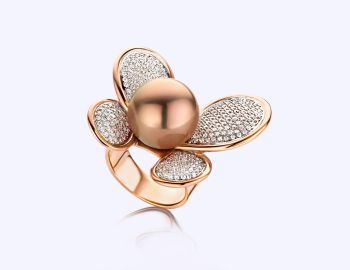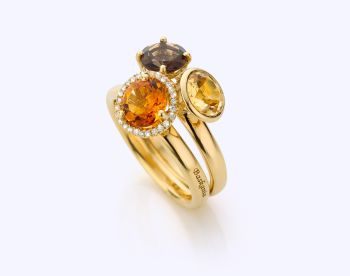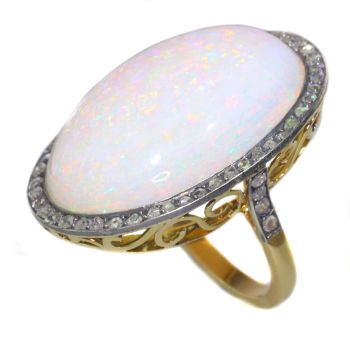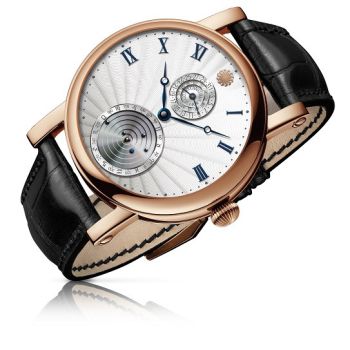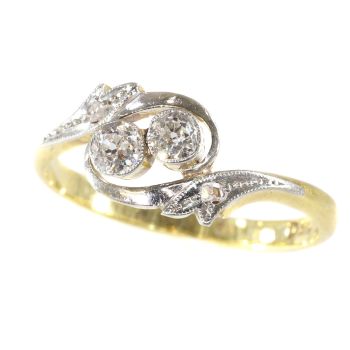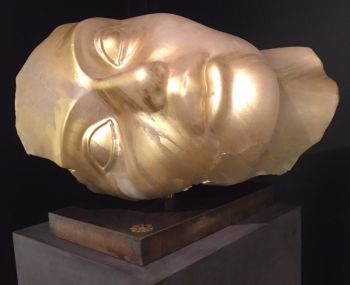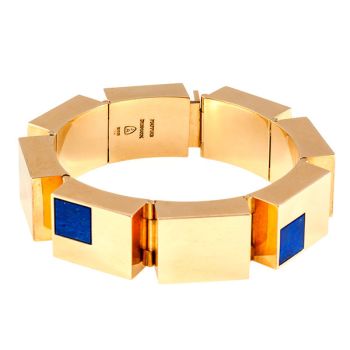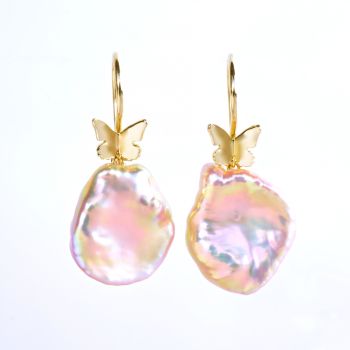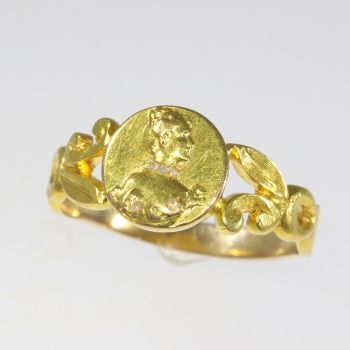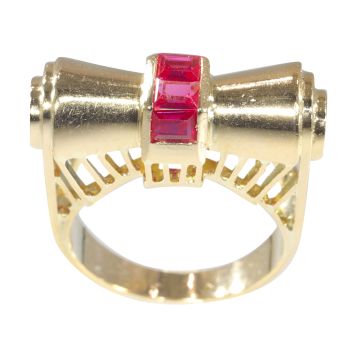Anel antigo da era do império, filigrana de ouro, mão de Fátima 1810
Artista Desconhecido
Adin Fine Antique Jewellery
- Sobre arte
This 18K red gold French ring from 1810 holds the hand of Fatima with a domed palm and filigree adornments. With such a meticulously embellished shank with filigree frills and leaflets, this jewel in Empire style offers you the opportunity to wear thehamsa -referring to the five digits of the hand- for protection on your own hand and to always be safe and well.
Antique jewelry object group: ring
Condition: good condition considering its age of 200 years (top of middle finger is missing - but very hard to see)
- (more info on our condition scale)
Country of origin: France
Style: Empire - The Empire style, sometimes considered the second phase of Neoclassicism, is an early-19th-century design movement in architecture, furniture, other decorative arts, and the visual arts followed in Europe and America up to around 1830. Thestyle originated in and takes its name from the period when Napoleon I ruled France, known as the First French Empire, where it was intended to idealize Napoleon's leadership and the French state. The style corresponds to the Biedermeier style in theGerman-speaking lands, Federal style in the United States and to the Regency style in Britain. An earlier phase of the style was called the Adam style in Great Britain and "Louis Seize" or Louis XVI, in France.
- See also: Empireor more info on styles
Style specifics: A style that borrowed style specifics from the ancient Greeks and the Roman empire (hence the name of the style: Empire). The empire period represents the second part of the Neo-Classical style, and shows a strong French influence. The style originatedin the desire of Napoleon to revive the luxurious majesty of imperial Rome. Traditional classical motifs, already seen in the reign of Louis XVI, were supplemented by symbols of imperial grandeur- the emperor's monogram and his emblem, the bee;representations of military trophies; and after the successful campaigns in Egypt, Egyptian motifs. If we had to characterize this style briefly, we could focus on two elementary concepts: massiveness and symmetry.
Period: ca. 1810
- (events and facts in 1810)
Theme: The hand of Fatima - The hand of Fatima or The Khamsa (Arabic: khamsah also romanized khamsa, meaning lit. "five") is a palm-shaped amulet popular throughout the Middle East and North Africa, and commonly used in jewellery and wall hangings. Depictingthe open right hand, an image recognized and used as a sign of protection in many societies throughout history, the hamsa is believed to provide defense against the evil eye.
Early use of the hamsa has been traced to ancient Mesopotamia (modern-day Iraq). Other symbols of divine protection based around the hand include the Hand-of-Venus (or Aphrodite), the Hand-of-Mary, that was used to protect women from the evil eye, boostfertility and lactation, promote healthy pregnancies and strengthen the weak, and in the Buddha's gesture (mudra) of teaching and protection.[2] In that time, women were under immense pressure and expectation to become mothers. The women’s upbringing was centered on becoming a mother as an exclusive role, and it indicated child bearing as necessary. In addition, it was also thought marriage was a sense of protection for both the man and woman.
The hamsa's path into Jewish culture, and its popularity particularly in Sephardic and Mizrahi Jewish communities, can be traced through its use in Islam. Many Jews believe that the five fingers of the hamsa hand remind its wearer to use their fivesenses to praise God. This "favorite Muslim talisman" became a part of Jewish tradition in North African and Middle Eastern Muslim countries. The symbol of the hand appears in Kabbalistic manuscripts and amulets, doubling as the Hebrew letter "Shin", the first letter of "Shaddai", one of the names referring to God.
The khamsa holds recognition as a bearer of good fortune among Christians in the region as well. Levantine Christians call it the hand of Mary (Arabic: Kef Miryam, or the "Virgin Mary's Hand"). Well after the end of Islamic rule in Spain, its use wassignificant enough to prompt an episcopal committee convened by Emperor Charles V to decree a ban on the Hand of Fatima and all open right hand amulets in 1526. (From: Wikipedia)
Material: 18K red gold
- (more info on precious metals)
Technique: Filigree (formerly written filigrann or filigrane) is a delicate kind of jewel work made with twisted threads usually of gold and silver or stitching of the same curving motifs. It often suggests lace and French from 1660 to the late 19th century. Itshould not be confused with ajoure jewellery work; while both have many open areas, filigree involves threads being soldered together to form an object and ajoure involves holes being punched, drilled, or cut through an existing piece of metal. (from: Wikipedia)
Hallmarks: The French hallmark depicting a rooster's head which was used in France for 18K gold around 1810.
- (more info on hallmarks)
Dimensions: width of top of ring 1,34 cm (0,53 inch)
Weight: 2,80 gram (1,80 dwt)
Ring size Continental: 56 & 17¾ , Size US 7½ , Size UK: O½
Resizing: This ring cannot be made smaller because of the way it is made. It can be made bigger by bending it open.
- (more info on ring sizes)
Reference Nº: 15128-0164
Copyright photography: Adin, fine antique jewelry
- Sobre artista
Pode acontecer que um artista ou criador seja desconhecido.
Algumas obras não devem ser determinadas por quem são feitas ou são feitas por (um grupo de) artesãos. Exemplos são estátuas dos tempos antigos, móveis, espelhos ou assinaturas que não são claras ou legíveis, mas também algumas obras não são assinadas.
Além disso, você pode encontrar a seguinte descrição:
•"Atribuído a …." Na opinião deles, provavelmente uma obra do artista, pelo menos em parte
• “Estúdio de…” ou “Oficina de” Em sua opinião um trabalho executado no estúdio ou oficina do artista, possivelmente sob sua supervisão
• "Círculo de ..." Na opinião deles, uma obra da época do artista mostrando sua influência, intimamente associada ao artista, mas não necessariamente seu aluno
•“Estilo de…” ou “Seguidor de…” Na opinião deles, um trabalho executado no estilo do artista, mas não necessariamente por um aluno; pode ser contemporâneo ou quase contemporâneo
• "Maneira de ..." Na opinião deles, uma obra no estilo do artista, mas de data posterior
•"Depois …." Na opinião deles uma cópia (de qualquer data) de uma obra do artista
• “Assinado…”, “Datado…” ou “Inscrito” Na opinião deles, a obra foi assinada/datada/inscrita pelo artista. A adição de um ponto de interrogação indica um elemento de dúvida
• "Com assinatura ….”, “Com data ….”, “Com inscrição ….” ou “Tem assinatura/data/inscrição” na opinião deles a assinatura/data/inscrição foi adicionada por outra pessoa que não o artista
Você está interessado em comprar esta obra de arte?
Related artworks
- 1 - 4 / 12
Artista Desconhecido
Pulseira de diamante do século 18 com entalhes de 2.000 anos1790
€ 23.000Adin Fine Antique Jewellery
 Com curadoria de
Com curadoria deDanny Bree
Artista Desconhecido
Set Franse Empire Pendules / Empire Lectura penduleearly 19th
Preço em pedidoKuipers Kunst & Antiek
Artista Desconhecido
Conjunto de oito desenhos a guache1799 - 1801
Preço em pedidoRobert Schreuder Antiquair
1 - 4 / 15- 1 - 4 / 24
- 1 - 4 / 24
- 1 - 4 / 12














